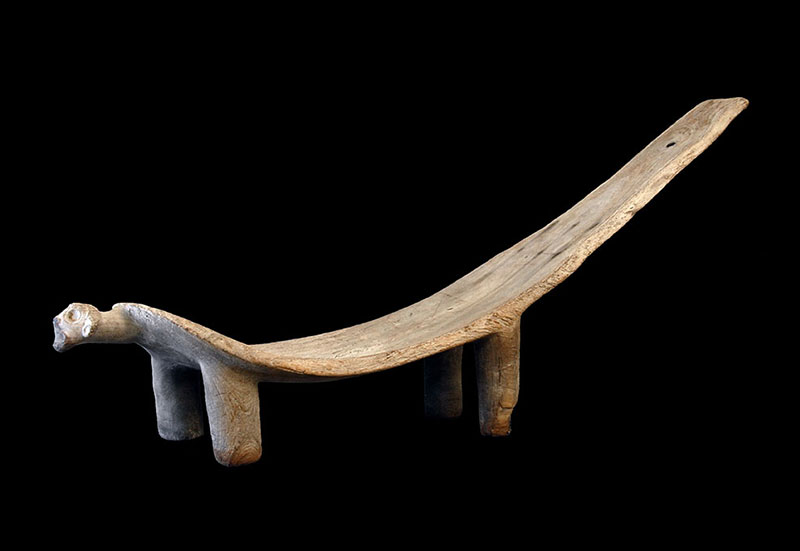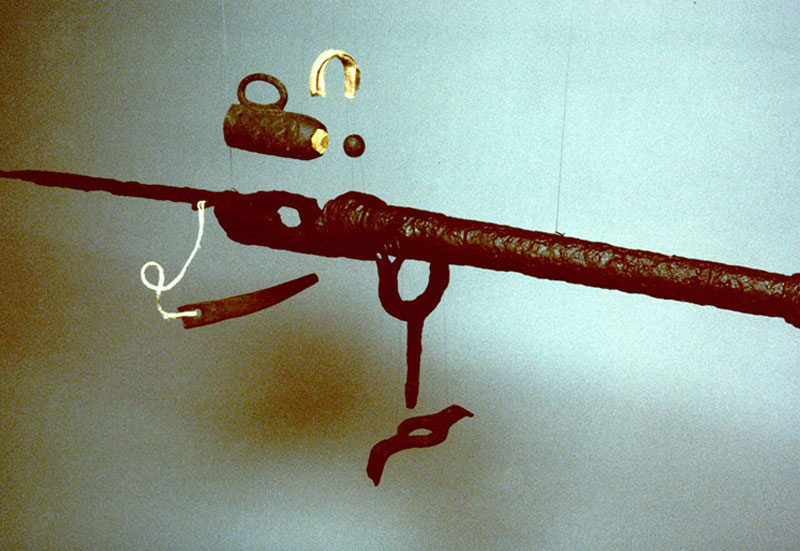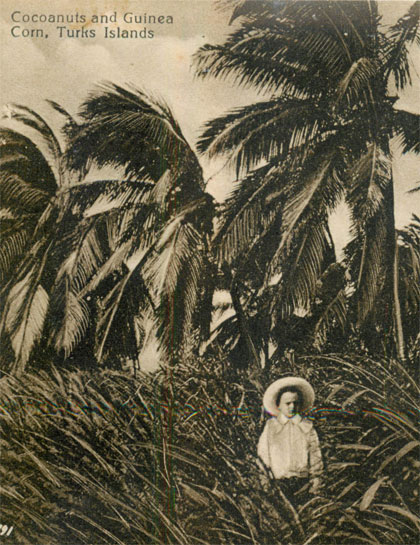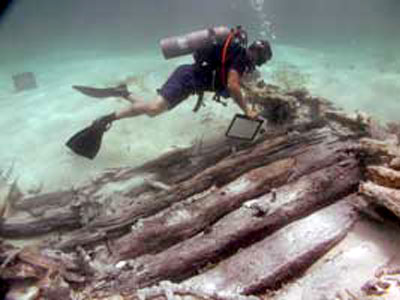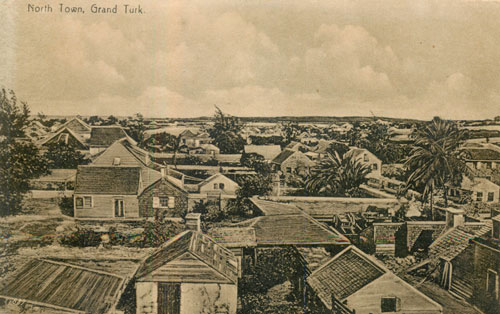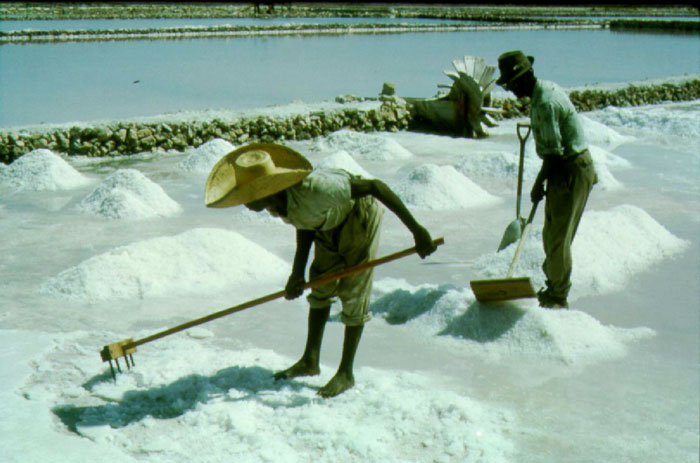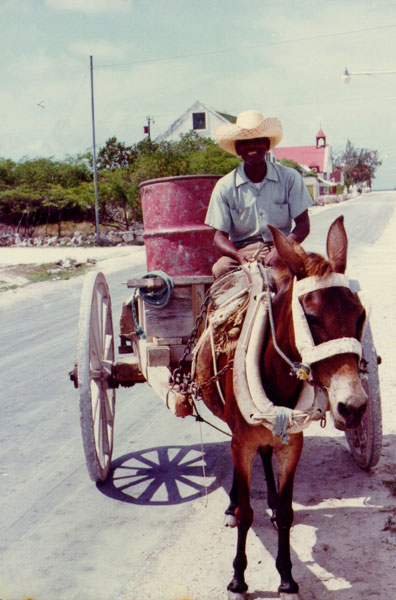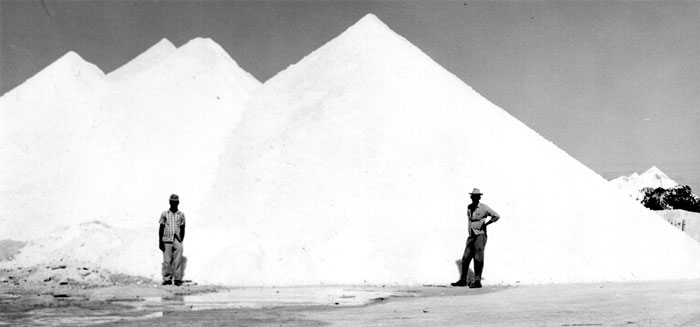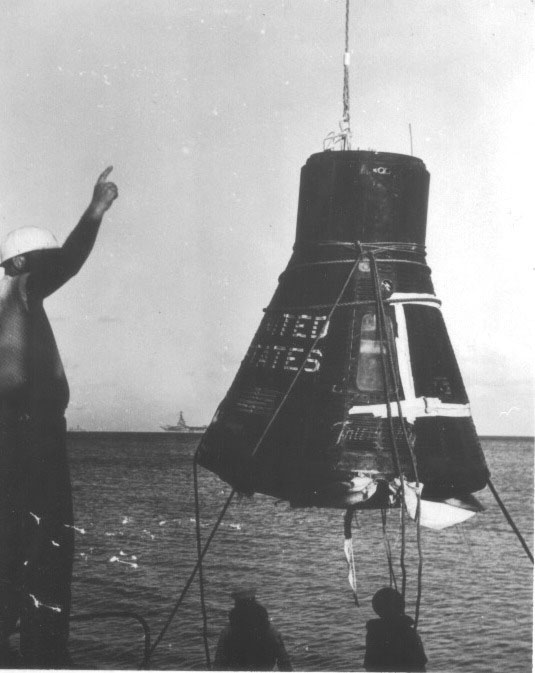Beautiful by Nature
The vast majority of the Turks & Caicos Islands territory is underwater and is a near pristine environment for coral.
Damage by boats, shipping, divers, and pollution has been minimal so far, and Islanders work hard to keep it that way. A lack of severe hurricanes in the past three decades has benefitted coral growth in the islands. The Museum’s coral reef exhibit showcases this underwater natural beauty.
Location Map of Parks, Reserves, Historical Sites and Sanctuaries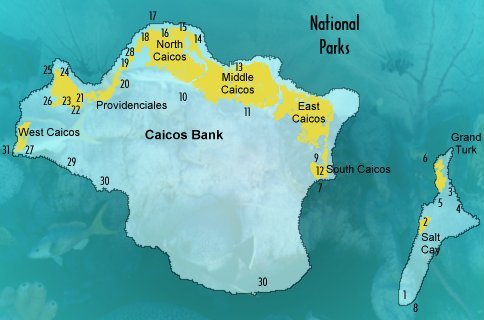
National Parks
3 Grand Turk Cays
5 South Creek
6 Columbus Landfall
7 Admiral Cockburn
13 Conch Bar Caves
14 East Bay Islands
19 Ft. George
20 Princess Alexandra
23 Chalk Sound
25 Northwest Point Marine
31 West Caicos Marine
Nature Reserves
9 Belle Sound & Admiral Cockburn Cays
11 Vine Point & Ocean Hole
15 Cottage Pond
16 Pumpkin Bluff Pond
18 Dick Hill Creek & Bellefield Landing Point
20 Princess Alexandra, Little Water, Mangrove, & Donna Cays
24 Northwest Point Pond
26 Pegeon Pond & Frenchman’s Creek
27 Lake Catherine
Ramsar Site
10 Wetlands on south side of Middle, North & East Caicos
Historical Sites
2 Salt Cay
12 Boiling Hole
21 Cheshire Hall
22 Sapodilla & West Harbour Bluff Rock Carvings
28 Ft. George
29 Molasses Reef Wreck
8 HMS Endymion
Sanctuaries
1 Big Sand Cay
4 Long Cay
17 Three Marys Cays
30 French, Bush, & Seal Cays
The Turks and Caicos Islands are renowned for their excellent reef diving. There are several underwater National Parks where no fishing is allowed. This fishing ban allows portions of the reefs to remain undisturbed and to provide a safe home to thousands of fish species.
For divers, the parks are an experience difficult to duplicate elsewhere. Outside the parks, the reefs are exploited to a limited degree as fishing grounds for lobster and conch. They appeal mainly to sport divers who come to marvel at their unsullied beauty and dive the remains of unlucky ships.
The Reefs influenced Island History
The lack of safe harbors and the abundance of reefs and coral heads provided ideal ambush sites and hiding places for privateers and pirates. Numerous ships wrecked here over the centuries. Anxious to keep the English out of the region, the French twice tried to occupy the Turks Islands, claiming that they did so only to erect navigational aids.
Lighthouse on the North End of Grand Turk
Nevertheless, Islanders profited from the abundance of wrecks by salvaging the cargo, ships’ timbers, and iron fittings. They viewed wrecks as acts of a beneficent providence. Eventually the size and value of ships grew to the point that shipowners no longer viewed wrecks as the price of doing business. Faced with ships avoiding the islands, the British built a lighthouse on the northern tip of Grand Turk in 1852.



